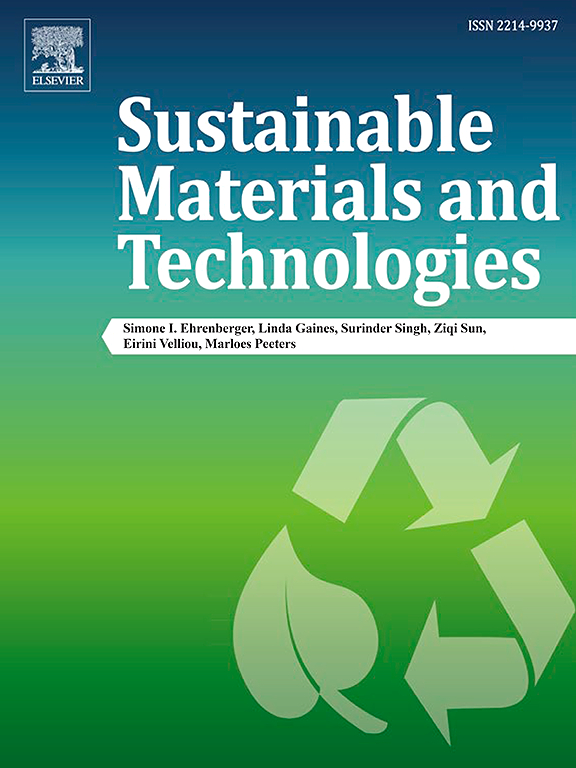Recycling of solid oxide electrolyzer stacks
IF 9.2
2区 工程技术
Q1 ENERGY & FUELS
引用次数: 0
Abstract
In recent years, hydrogen has become an increasingly important energy carrier, replacing fossil fuels. In this context, electrolyzers have become a focal point of global research, as they facilitate the production of green hydrogen. Among electrolyzers, solid oxide electrolyzers are one of the most widely researched due to their high efficiency and their variability in terms of fuels and operation as fuel cells. However, due to the use of critical materials in combined with a relatively short operational lifespan, the development of recycling strategies is becoming increasingly crucial if these electrolyzers are to become a sustainable option for green hydrogen production. This study proposes the first comprehensive recycling scheme for solid oxide electrolyzer stacks. Data on the materials used by electrolyzer manufacturers from around the world was compiled and compared. Based on these materials, published recycling approaches from dismantling, mechanical recycling and metallurgy were combined with additional studies to develop a holistic recycling process aimed at recovering critical raw materials. Options for closed-loop and open-loop reuse were considered and existing gaps and challenges were identified. The current status of recycling solid oxide electrolyzer stacks demonstrates that the principle is feasible and that a significant proportion of the materials used can already be separated and recovered. However, existing gaps, such as the separation of the nickel mesh from interconnects and the separation of various oxygen ion conductors, currently result in materials being downcycled or recycled in an open loop.

固体氧化物电解槽堆的回收利用
近年来,氢已取代化石燃料成为越来越重要的能源载体。在这种背景下,电解槽已成为全球研究的焦点,因为它们促进了绿色氢的生产。在电解槽中,固体氧化物电解槽由于其高效率和燃料的可变性以及作为燃料电池运行而成为研究最广泛的电解槽之一。然而,由于使用的关键材料与相对较短的使用寿命相结合,如果这些电解槽要成为绿色氢生产的可持续选择,那么回收策略的发展就变得越来越重要。本研究首次提出固体氧化物电解槽堆综合回收方案。收集和比较了世界各地电解槽制造商使用的材料数据。在这些材料的基础上,从拆解、机械回收和冶金等方面发表的回收方法与其他研究相结合,以制定一个旨在回收关键原材料的整体回收过程。审议了闭环和开环重用的备选方案,并确定了现有的差距和挑战。固体氧化物电解槽堆循环利用的现状表明,该原理是可行的,使用的材料中有很大一部分已经可以分离和回收。然而,现有的间隙,例如镍网与互连的分离以及各种氧离子导体的分离,目前导致材料在开环中被降级或再循环。
本文章由计算机程序翻译,如有差异,请以英文原文为准。
求助全文
约1分钟内获得全文
求助全文
来源期刊

Sustainable Materials and Technologies
Energy-Renewable Energy, Sustainability and the Environment
CiteScore
13.40
自引率
4.20%
发文量
158
审稿时长
45 days
期刊介绍:
Sustainable Materials and Technologies (SM&T), an international, cross-disciplinary, fully open access journal published by Elsevier, focuses on original full-length research articles and reviews. It covers applied or fundamental science of nano-, micro-, meso-, and macro-scale aspects of materials and technologies for sustainable development. SM&T gives special attention to contributions that bridge the knowledge gap between materials and system designs.
 求助内容:
求助内容: 应助结果提醒方式:
应助结果提醒方式:


